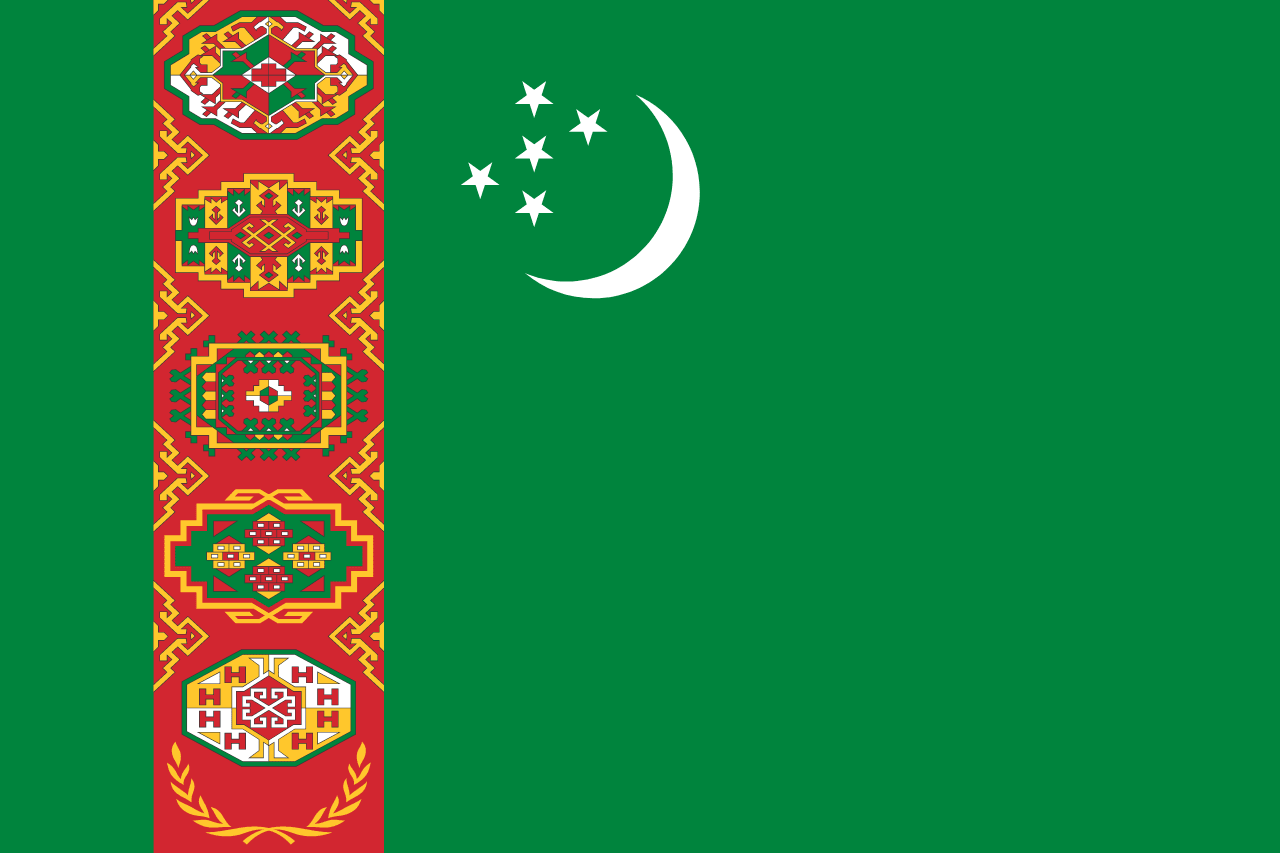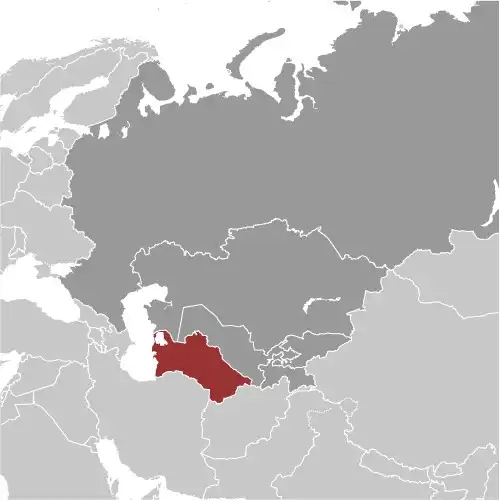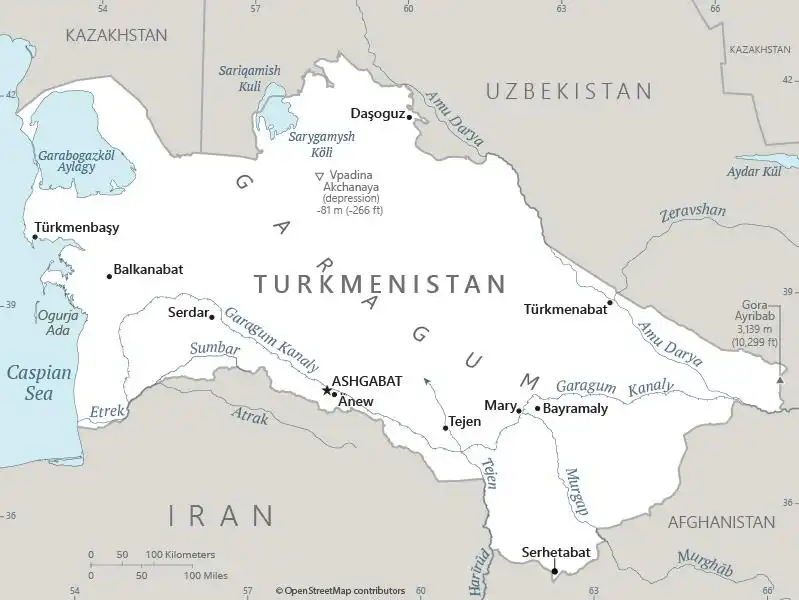
Turkmenistan Country Profile
Key Facts of Turkmenistan

| Government type: | presidential republic; authoritarian |
| Capital: | Ashgabat (Ashkhabad) |
| Languages: | Turkmen (official) 72%, Russian 12%, Uzbek 9%, other 7% |
Turkmenistan Demographic Data
Ethnic Groups in Turkmenistan(2003 est.)
Religious Groups in Turkmenistan (2020 est.)
Turkmenistan Economy Statistics
Economic overview of Turkmenistan
upper middle-income Central Asian economy; has 10% of global natural gas reserves, exporting to Russia and China; natural resource rich; authoritarian and dominated by state-owned enterprises; major central-south Asian pipeline development
Turkmenistan Real GDP (purchasing power parity) in Billion $
Turkmenistan Real GDP per capita in $
Turkmenistan's Exports & Imports in billion $
Top 5 Import Partnerin 2022 (81%) of Turkmenistan
Top 5 Import Commodities in 2022 of Turkmenistan
- broadcasting equipment 📡
- cars 🚗
- wheat 🌾
- computers 💻
- iron structures 🛠️
Top 5 Export Partnerin 2022 (89%) of Turkmenistan
Top 5 Export Commodities in 2022 of Turkmenistan
- natural gas 💨
- refined petroleum ⛽
- fertilizers 💩
- crude petroleum 🛢️
- electricity ⚡
Geography of Turkmenistan
Map of Turkmenistan

Land and Water Distrubtion of Turkmenistan
Natural Resources of Turkmenistan
- petroleum 🛢️
- natural gas 💨
- sulfur 🧪
- salt 🧂
Climate inTurkmenistan
subtropical desert
History of Turkmenistan - a Summary
Present-day Turkmenistan has been at the crossroads of civilizations for centuries. Various Persian empires ruled the area in antiquity, and Alexander the Great, Muslim armies, the Mongols, Turkic warriors, and eventually the Russians conquered it. In medieval times, Merv (located in present-day Mary province) was one of the great cities of the Islamic world and an important stop on the Silk Road. Annexed by Russia in the late 1800s, Turkmen territories later figured prominently in the anti-Bolshevik resistance in Central Asia. In 1924, Turkmenistan became a Soviet republic; it achieved independence when the USSR dissolved in 1991.
President for Life Saparmurat NIYAZOV died in 2006, and Gurbanguly BERDIMUHAMEDOV, a deputy chairman under NIYAZOW, emerged as the country's new president. BERDIMUHAMEDOV won Turkmenistan's first multi-candidate presidential election in 2007, and again in 2012 and 2017 with over 97% of the vote in elections widely regarded as undemocratic. In 2022, BERDIMUHAMEDOV announced that he would step down from the presidency and called for an election to replace him. His son, Serdar BERDIMUHAMEDOV, won the ensuing election with 73% of the vote. Gurbanguly BERDIMUHAMEDOV, although no longer head of state, maintains an influential political position as head of the Halk Maslahaty (People’s Council) and as National Leader of the Turkmen People, a title that provides additional privileges and immunity for him and his family. Since Gurbanguly BERDIMUHAMEDOV stepped down from the presidency, state-controlled media upgraded his honorific from Arkadag (protector) to Hero-Arkadag, and began referring to Serdar BERDIMUHAMEDOV as Arkadagly Serdar, which can be translated as "Serdar who has a protector to support him."
Turkmenistan has sought new export markets for its extensive hydrocarbon/natural gas reserves, which have yet to be fully exploited. Turkmenistan's reliance on gas exports has made the economy vulnerable to fluctuations in the global energy market, and economic hardships since the drop in energy prices in 2014 have led many citizens of Turkmenistan to emigrate, mostly to Turkey.
